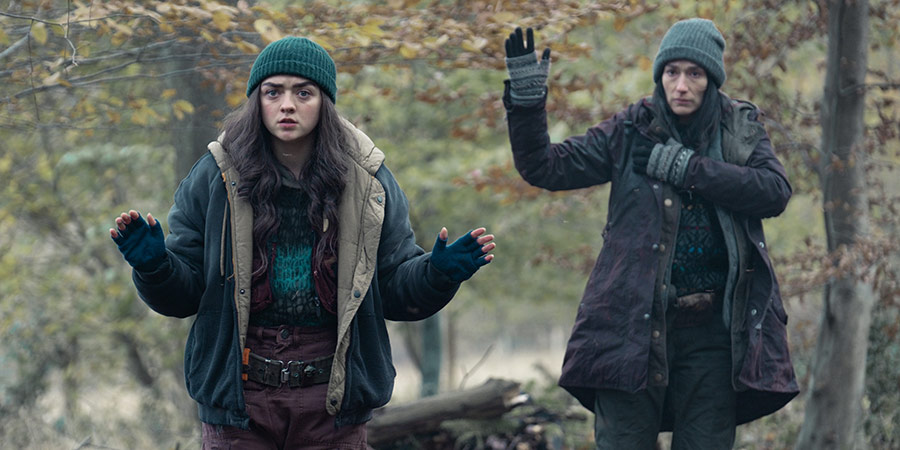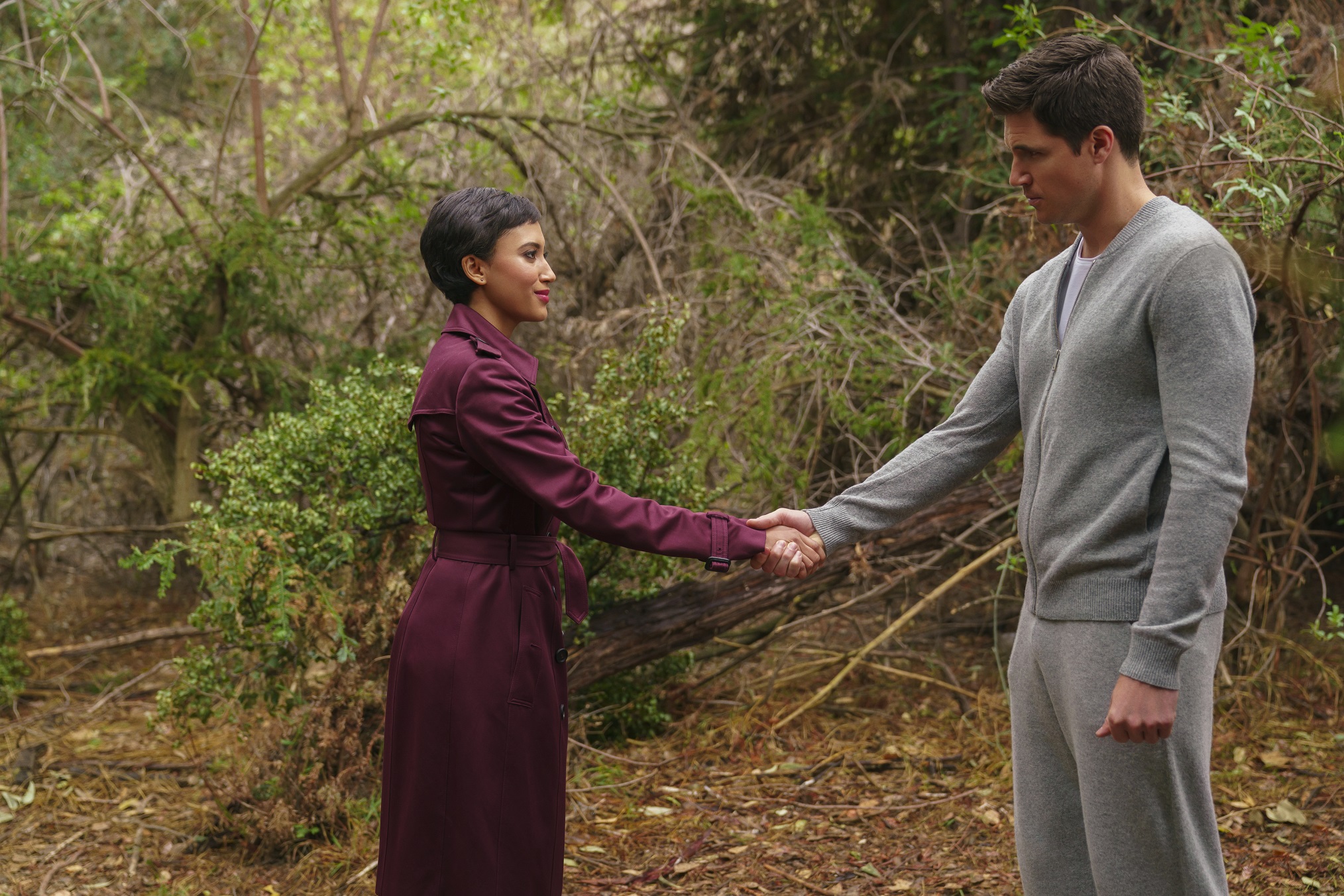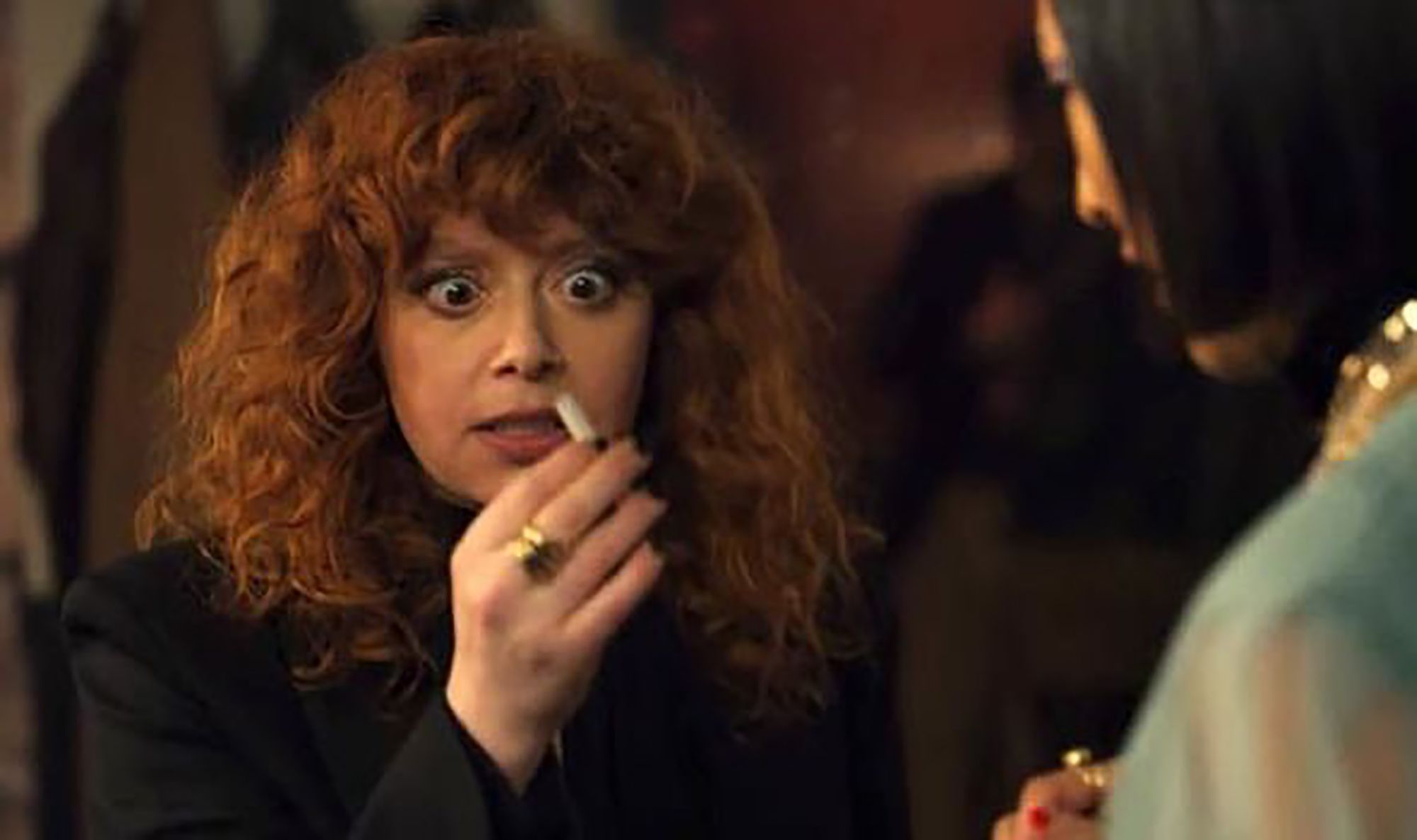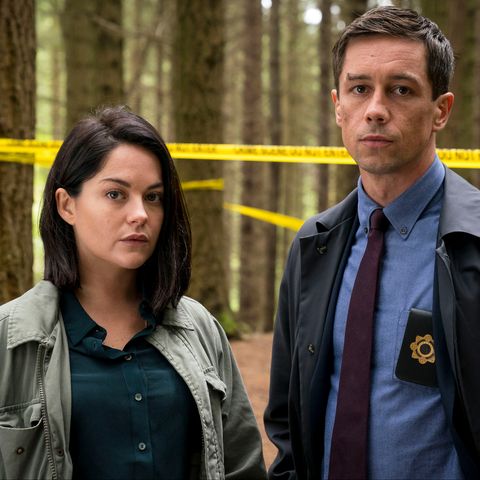Arrecife is shut. It's closed when we arrive, 2 hours late*, at 9 p.m. on Saturday night, and it's shut all of Sunday. Thus the capital of Lanzarote looks like a fishing village during a siesta for much of the day. It's a beautiful morning though and, after a trad.
desayuno of cafe con leche con croissants, we wander around the Charco (lagoon), past the whale skeleton and statues of people hitting each other with fish bladders, and to the beach front to the 'balls bridge' - a cobbled drawbridge, leading to the fort of San Gabriel (our apartment has a view of this, as well as the sea, the 16th century church and the
Cabildo Insular, the ex-town hall, now a sort of cultural centre). We go into the fort and read about the history of Arrecife, although it is only in Spanish, so my understanding is a bit vague. I definitely got something about pirates (always fun) and the fact that the poor old Guanches were conquered by eighty Spaniards, back in the day/the 1400s. Maybe they were having a duvet day and were unprepared. Nowadays, it's conquered by Brits, Germans, Danes and the odd Polish person. There's a also a mummified man, for no particular reason - this seems to be the highlight of the fort-museum. Arrecife's old town seems to be in Teguise, which was the inland capital until the mid-1800s.

We walk a way out of town to find a shop that's open for supplies and them mosey on down towards the beach area where I buy a golfio ice cream, as it's a flavour I've never tasted before. Turns out to be a type of Canarian grain, so I've essentially purchased a semolina ice-cream, although Dave thinks it's cornet flavour. We go onto the beachfront, where I see Lanzarote's harem-panted hippie population (all three of them), Lanzarote's alt-metal scene (a man on a skateboard playing loud rawk), and later, when the sun goes down and we reach the city limits (a dog exercise park, presumably for the
perro owners to practise for Cruftzarote), Lanzarote's hip-hop scene (four lads practising their rapping around a CD player). In the evening, we eat outdoors, overlooking the lights on the harbour, eating fried cheese and Canarian potatoes plus
mojo, and drinking local beer.
*The baggage dudes at Stansted were "handing everything manually, as a test." if this was a pre-Brexit test, it went Not At All Well.

You can get anywhere on the bus as long as it's to the airport or another tourist resort. So we go to the big one, Puerta Del Carmen, or as it should really be called: Inglaterrita. The bus takes us to a long strip of bars, Irish pubs, beach shops, tat shops, Indian restaurants, Chinese restaurants, "Spanish" restaurants, railings covered in heart-shaped locks, cheap jewellery* shops, booze shops set up to look like duty-frees selling half bottles of off-brand brandy for €5.50, shops selling slogan t-shirts ("I don't need google, my mother-in-law tells me everything"), all of them playing Now That's What I Call The Eighties: Taylor Dane, Huey Lewis, Phil Collins, Stevie Winwood, Rick Springfield. The place is full of middle- and old aged British people, all showing off their sunburn, and is a Brexiter's wet dream: It's like England, but hot. Everyone speaks English and you can have your €2.50 English breakfast, complete with "British bacon" and "Branston beans", washed down with your pint of €2 Heineken. No-one's banned plastic straws and nothing costs more than it would've in 1981. It's the worst of all Europe: German language excursions, Carlsberg bars, English food. There is a glass bottomed boat tour, to make your rockin' world go 'round. I don't take any photos because I'm not a Martin Parr imitator. There is a Finnegan's Wake bar, where I presume you can get a side of modernism with your pint of English Guinness. We walk out of the town, around the harbour, past cat and cactus villages. In the clear water are big fish, little fish (but no cardboard boxes, litter is not an issue here). We find a sort of Italian with a veggie menu and have aubergine parmesana overlooking the mini-golf. In Arreceife, the local tax is included in the food prices, here it's added on, like in the US, presumably to lure the tourists into a false sense of parsimony.
*Mind you, I like the way that jewellery shops are called joyerias in Spanish. KonMarie that shit!
However, the good thing about Lanzarote being full of OAP Brits is that restaurants start their service at a reasonable time, so you haven't got your nose pressed against the window at 8.55 p.m. wanting your tea. Apart from Arrecife's vegan restaurant, which opens at 8 o'clock. So we go onto the waterfront and have cocktails (me: frozen slushie, him: posh rum 'n' soda) at a place ambitiously named Moet, along with some nibbles perhaps from a tourist's left behind Graze boz (salted corn, olives), which unfortunately bloats me up so much I can't eat any of the veggie burger when the vegan place finally opens for dinner.

After breaky-ing in a new bakery, which is also patronised by a reassuring cabal of old ladies (I notice that they do a
Desayuno Abuela/Granny Breakfast - milky coffee and a biscuit), we hire bikes and set off east along the coast road. Yesterday, I complained that we had to walk a mile to get to the bus-stop; today I realise why that's a good thing - the buses use the ring road, meaning the front is pleasant to cycle through, along with fellow tourists on city bikes and the occasional lycra-d up Alberto Contador wannabe. We take the
Paseo Maritimo, past a cute lighthouse, a shipwreck gently rusting in the harbour and the ruined rocks of a fort.

We pass flora of cactii, palms, aloes, prickly pears and
rofe (the volcanic ash/gravel) and fauna of mopeds, cyclists, electric scooter riders, and mobility vehicles, then stop at Castillo de San Jose, the second fort, this one turned into an art gallery, rather than a museum. There is a Cesar
Manrique painting, influenced by a novel by Malcolm Lowry, Under The Volcano, some sculpture, a painted piano, and much abstractia. Outside, there are Antony Gormley-esque horses "drinking" the sea-water (we later find out that this artist has done a whole underwater sculpture series that you have to learn to dive to see). Up on the roof is a view of the container port and misc. heavy industry. Further on, the road turns into a path and after a few wrong turns, and a failed attempt to walk down an A-road, we end up off-roading across the volcanic sand of an industrial estate, until we get to a cute village (Caletas) on the outskirts of our putative destination, Costa Teguise. What would it be like to live here, in a white-washed villa facing down the Atlantic? Would looking at the sea on a daily basis get tedious? Would you start searching out shipwrecks and mermaids to break the boredom? Watch surfers go under? Growing up in landlocked Doncaster and now living 40 miles and a long train ride from the seaside, it seems unimaginable.

We get to the bungalow-and-tapas outskirts of Costa T, which reminds me more of Goa than the fleshpots of Puerta Carmen, although as we get further in, the beach and inflatable shops start and I realise that this is the Masopolomas to Puerta's Playa El Ingles, the Southport to its Blackpool, the Hove to Puerta Carmen's Brighton. We find the main square,
Pueblo Marinero, designed by local artist-cum-architect Cesar Manrique, but has now been taken over by the Bluebells Rangers bar, the Midlands Bar, a pizza place, a "jazz" cocktail bar and a fake Tex-Mex. Cesar, I am truly sorry that British people ruin everything. We once went around the world telling people that our way of life was brill and it was for the best that we take over their country for them, now we do the same, only with English breakfasts and sectarian pubs. Mind you, Cesar M volunteered to join Franco's army, so he can go whistle. We find an Italian off the main drag and fuel up on pasta for the ride back.
In the evening, we watch a Spanish telenova called El Cuerpo del Deseo, in which a lot of eye-rolling
mujeres stand around crying whilst a man plays the piano. Turns out that he's a reincarnation of the thinnest woman's dead husband, who's come back in the body of another
hombre, one who was about to become a dad with another blubbing lady. It's so brilliant, it's actually terrible, and I can see where Almovodar got all his ideas from.
Spend Wednesday, like Chris Rea, on the beach, until hunger drives us off for salad and lasagne. No photos from today, because the glare of my white bod would cause too much lens flare. With only one bathing costume between us*, we take it in turns to swim in the translucent water, watching shoals of minnow flitter past. This half mile of beach (Playa Reducto) is quiet, no loud music, drunk teens or people trying to sell you stuff. The only disturbance is a group of school-kids here to learn all about being a lifeguard. They listen politely, then clap at the end. The youth of today, hey! The lifeguard station has a guide to the UV rays, from green to purple. Today is only yellow, but still, I burn the back of my ankles.
We mosey on back into town and visit the Cabildo Insular, which is showing a display about the carnival, which seems to be on a week before our own Protestant pancake day. Like many of the Pagan-y festivals, it was banned in the Victorian times and reinstituted in the 20th century (1963 in this case). It comprises getting dressed up as a beast or devil and hitting people over the head with a fish or pig bladder (depending on whether you're from Arrecife or Teguise) and in particular men hit women "to make them fertile".
Riiiiiight. Having a lovely crepe with lemon and sugar seems like a better way of celebrating Christ's wandering off to the wilderness, in my opinion, but it finally explains why a man hit me over the head with a balloon during the Basque national festival in Bilbao in 2004. Didn't work though,
chico!

We also go into the church, which is in a lovely cactus-filled square that only needs some domino-playing old men for Full Authenticity. The church isteself is cool and calm and not overly Catholic, by which i mean it doesn't have an OTT gold altar, a holy blood relic, or a dress up Madonna as we have seen in Seville, Bruges, and Teror (Gran Canaria), respectively. In fact, apart from the odd nun in a bakery, it feels pretty secular here and religion seems low in people's priorities, compared to sunning oneself, anyway.
*Dave's rash-vest worn as a mini-tankini. I looked at buying a bikini but they all had padded bras and skimpy bottoms. Sigh, I dunno, you spend your adolescence waiting for pubes 'n' boobs, then when they arrive, you don't want 'em after all.
For dinner, we go to another vegan place. We walk in, sit down and are asked somewhat suspiciously: "Do you want to eat?", an unpropitious start. The waitress then shows us "a small amount of daal" in the fridge, although in the end, we manage to order two nice salads and a "goulash", and Dave is happy because there's Lanzaroten craft beer in the fridge. Plenty of other people/tourists come in, so there is a definite demand for meat-free food - a junk food vegan place would probably clean up here. We go onto a deli/craft beer bar which opens up onto the
charco and serves its beer in glasses straight from the freezer, but is also full of two English couples, on of whom is insisting that the other go to Jamaica to renew their vows for their 20th anniversary, "...or at least get her an eternity ring, otherwise how will she know that you love her?" I do hope that the hubby is going to be able to find a dozen red roses for Valentine's Day tomorrow, otherwise there's going to be tantrums before
desayuno.
We walk around the silent lagoon, contemplating stealing a boat and running off to sea, but instead bump into our fave cat, El Negrito, who is always up for strokes. This is thee only cat we've seen in Arrecife, this is the Canary/Canis islands after all.

Having given up on the local transport, we take a coach trip into the volcanic region. We travel through a landscape of butterflies, daisies, buttercups, black volcanic fields, tiny whitewashed churches, squash growing in market gardens, dry stone markers around crops, russet-coloured mountain flowers, lichen growing on the sides of the brown and red and khaki volcanoes, horseshoe shaped walls around tiny wine vines growing in craters. We stop at a vineyard for a tasting. Unfortunately, the
terroir has not worked and the wine is really quite bad. We drive on past rolling yellow mountains, like sand dunes, through a black lunar landscape with treacly rocks, and dust mists across the mountain range to El Golfo, with seventh wave type surf over one side and a calm green lagoon on the other.

Further on to Timanfaya national park, and to fire mountain, where the park rangers do the tourist tricks for us, dropping some bracken into the volcano and watching it set alight, doing the same with water to create a mini-geyser and cooking half a chicken over a deep set volcanic BBQ pit. No wonder the
ancien Lanzarotens thought devils lived in the volcanoes. Lava falls like marmelade.


We also go on a camel ride. The camels are quite sweet and docile, I'm hoping because they were bred to be so, rather than because the camel-owners put bromide in their feed bags. The one behind us in the chain gang puts its snout on my shoulder and snuzzles with its muzzle. The ride itself is bumpy and makes me feel quite bit travel sick; I think that if I had lived in the Sahara and my tribe decided to take a caravan of camels across the desert, I'd volunteer to stay home and mind the tents. This region is not a desert, it has a rainy season, hence the flora, but the camels are the only animals here, we don't even see a lizard or a goat or a bird all day. The guide loves talking about magma,
rofe and lava - I suspect he took a Geology degree, but couldn't geologise anywhere, so this is the next best thing. We drive past craters and stalagmites and views, most of which I can't look at due to vertigo and the sheer drop down the narrow, crash barrier-free mountain roads.

Stop at a buffet place for lunch (at 3 p.m., like
monsters), next door to the stone and whitewash church of Our Lady of the Sorrows, which was built after the lava from the volcano stopped flowing into the village after the locals prayed to the Virgin Mary, promising a shrine to her if she could cease the volcanic eruptions, To be honest, I'd've thought that once ol' Maria got to heaven, she'd have been too busy making up for all the fun she didn't have on earth: boozing, carousing, man-ising. She was probably more focussed on getting rid of the pesky hymen than sorting out local geology.
Onto a Mirador (not the famous Mirador del Rio), where we stop for drinks, toilets and the gift shop, which is esactly the same as every other gift shop we've visited, although they are useful for applying the aloe vera testers onto my sundried skin, so I don't go all biltongy.
Final stop of the day is Jameos del Agua, caves set around a pool, which is full of tiny blue glowing lobsters like underwater fairy lights and a calm cafe designed by Cesar Manrique (him again), The drive back to Arrecife goes past his house and his roundabout sculpture-slash-windcharm. On the road into the town, a flock of white egrets rises up in unison and falls like the waves.















































































